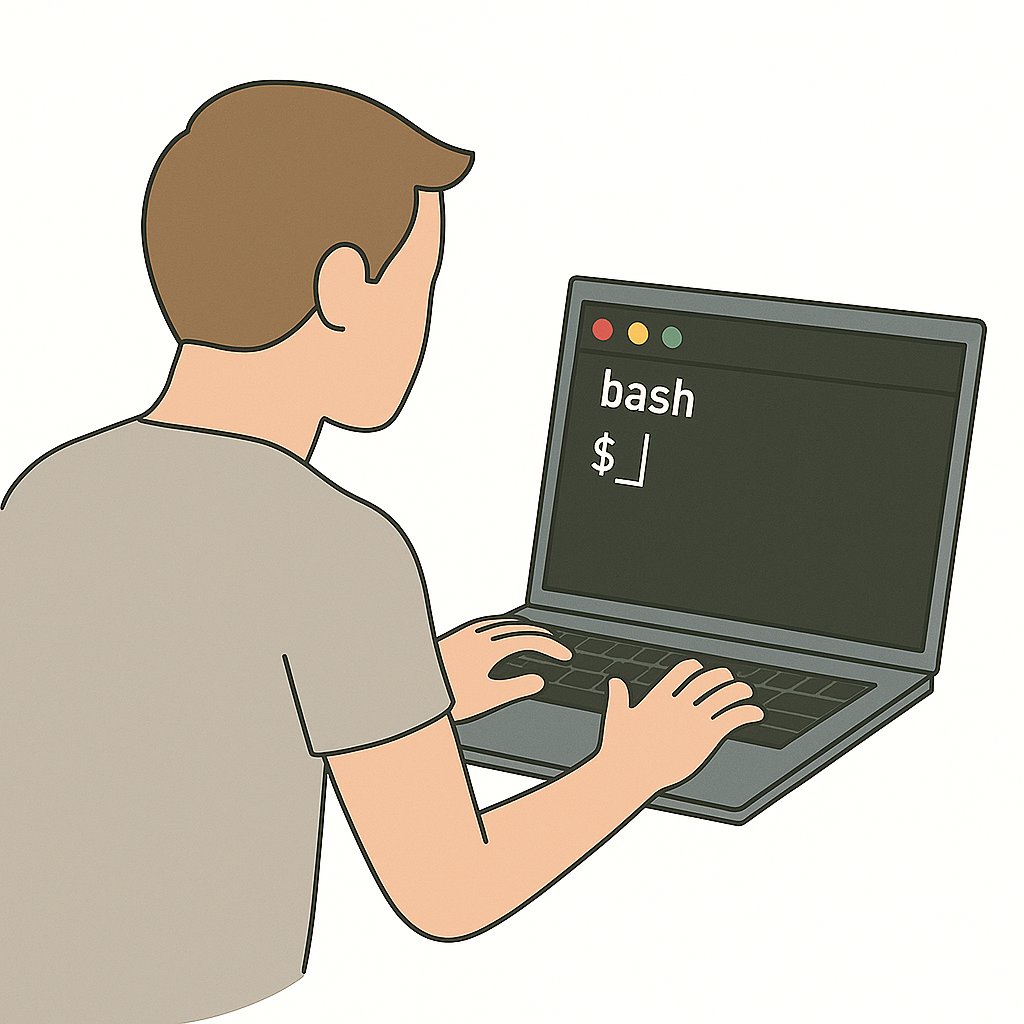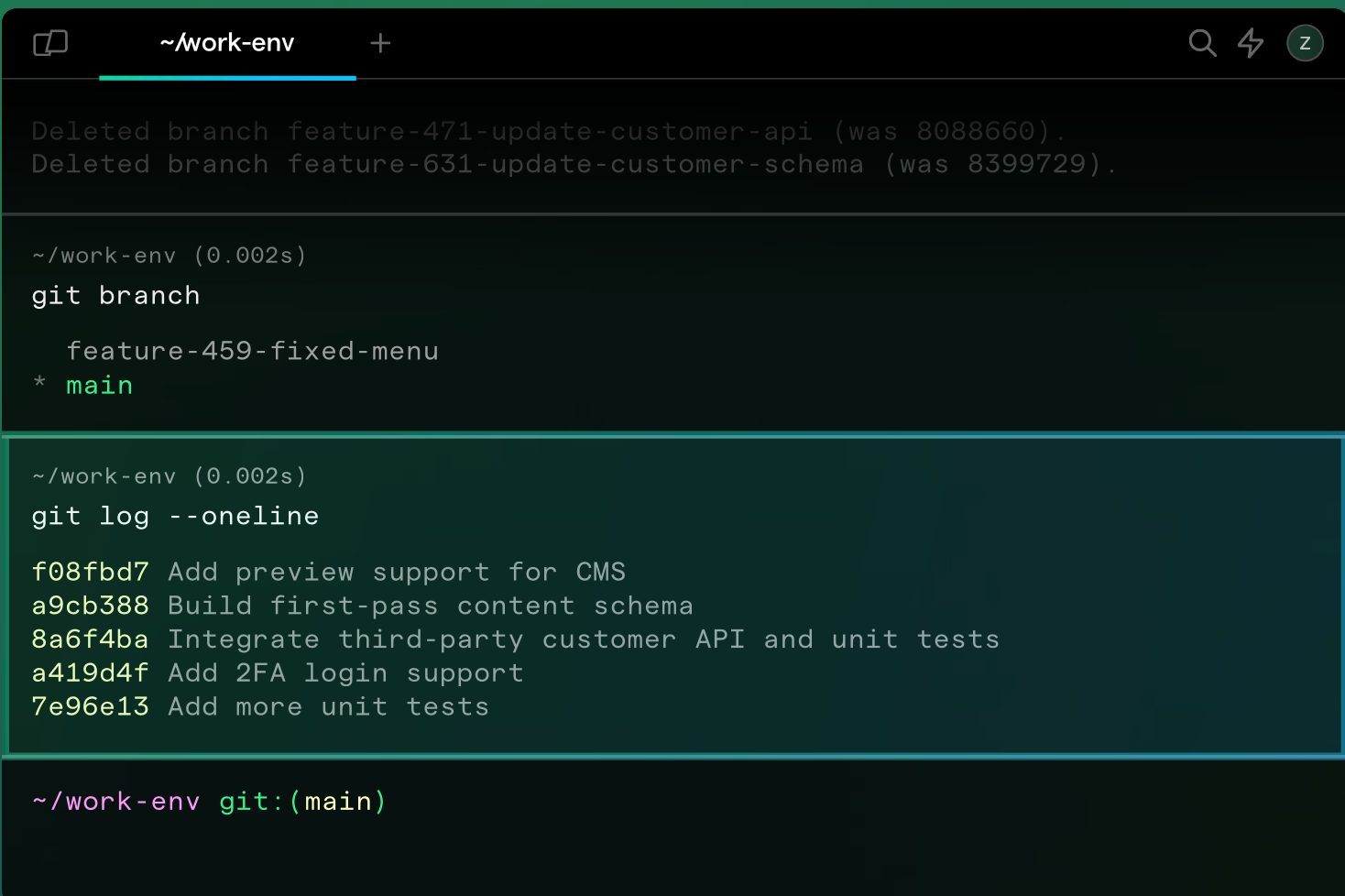20 Essential Bash Commands That Will Transform Your Command Line

If you’ve ever found yourself staring at a blinking terminal cursor, wondering if there’s more to life than ls and cd, you’re in for a treat. Bash isn’t just a command-line interface—it’s like the Swiss Army knife of your computer, packed with tools you probably didn’t know you needed but won’t be able to live without once you do.
As a TPM, you may not get to spend as much time in the abyss of the black-screen as developers but why shouldn’t you? By forcing myself to embrace being more proficient in navigating terminal, I can do things quicker than I would using a UI, do some fool around with more advanced scripting, and be on the same page as developers.
In this post, we’re diving into 20 essential Bash commands that I have handpicked that aren’t just useful, they’ll make you feel like a terminal wizard.
Let’s crack open the terminal and get to work.
1. pwd — Print Working Directory
Think of pwd as your digital “You Are Here” sign. It tells you exactly where you are in your system’s directory tree.
pwd
Why it’s essential: When you’ve burrowed deep into folders like ~/projects/2025/June/client_files/final_final_v2, it’s easy to lose track. pwd keeps you grounded.
2. cd — Change Directory
Ah, cd, the command that gets you from A to B. Want to jump into a folder? This is your ticket.
cd Documents/Projects
Pro tip:
cd ~takes you home (literally, to your home directory).cd -is pure magic—it takes you back to the previous directory. LikeCtrl+Zbut for folders.
3. ls — List Directory Contents
If cd is how you move around, ls is how you see what’s around you.
ls -la
Why the -la?
-lgives you a detailed list (permissions, sizes, dates).-ashows hidden files (those starting with.).
Combine them, and you’ve got x-ray vision for your folders.
4. cp — Copy Files and Directories
Need to duplicate a file? cp has your back.
cp original.txt backup.txt
Want to copy entire directories? Add the -r (recursive) flag:
cp -r folder1 folder2
5. mv — Move (or Rename) Files
Counterintuitively, mv isn’t just for moving files—it also renames them.
mv file.txt newfile.txt
Or to move it somewhere else entirely:
mv report.txt ~/Documents/Reports/
6. rm — Remove Files and Directories
The digital equivalent of “delete,” rm is powerful—and unforgiving.
rm file.txt
Want to delete an entire folder?
rm -r folder/
Caution: There’s no “Recycle Bin” in Bash. Once it’s gone, it’s gone. Add -i for a confirmation prompt if you’re feeling cautious:rm -ri folder/
7. touch — Create Empty Files
Need a new file in a hurry? touch is your best friend.
touch newfile.txt
Fun fact: If the file already exists, touch updates its timestamp. Great for sneaky version control tricks.
8. cat — Concatenate and Display File Contents
Despite the name, cat isn’t just for combining files—it’s commonly used to display file contents:
cat filename.txt
Want to combine files?
cat file1.txt file2.txt > combined.txt
9. grep — Search Text Using Patterns
grep is like Ctrl+F on steroids. It searches through files (or output) for specific text patterns.
grep "error" log.txt
Combine with -r to search through directories:
grep -r "TODO" ./codebase
10. find — Locate Files and Directories
Lost a file somewhere in the abyss? find can track it down.
find /path/to/search -name "filename.txt"
Need to find all .log files?
find . -type f -name "*.log"
11. chmod — Change File Permissions
File permissions got you locked out? chmod is here to help.
chmod 755 script.sh
This adjusts who can read, write, or execute the file. It’s a bit complex under the hood, but once you get it, you’ll feel like a security guru.
12. chown — Change File Ownership
Need to transfer file ownership? chown does the job.
sudo chown username:group file.txt
Pro tip: Use with sudo if changing ownership of system files. But don’t go wild—misusing it can cause system hiccups.
13. echo — Display a Line of Text
Simple yet versatile, echo outputs text to the terminal.
echo "Hello, world!"
Bonus: Use it for quick environment variable checks.
echo $PATH
14. man — Read Manual Pages
Feeling stuck? man is your built-in cheat sheet.
man grep
It opens the manual for any command. Navigation pro tip: Press q to quit.
15. history — View Command History
Ever wish you could recall that perfect command you typed last Tuesday? history has your back.
history
Re-run a command by its number:
!123
16. alias — Create Shortcuts for Commands
Tired of typing ls -la? Make it an alias:
alias ll='ls -la'
Permanent aliases can be added to ~/.bashrc or ~/.bash_profile.
17. wget — Download Files from the Web
Need to fetch a file directly from a URL? wget is your command.
wget https://example.com/file.zip
Great for automating downloads in scripts.
18. tail — View the End of a File
Perfect for monitoring logs in real-time:
tail -f /var/log/syslog
Add -n to control how many lines you see:
tail -n 20 logfile.txt
19. df — Check Disk Space Usage
Running low on space? df shows you the breakdown.
df -h
The -h flag makes it human-readable (think GB and MB instead of raw bytes).
20. ps — View Running Processes
Want to see what’s running on your system? ps reveals active processes.
ps aux
Add | grep to filter:
ps aux | grep python
Final Thoughts
Not quite a command but a tool preference. Over the last year or so, I have switched over from iTerm2 to Warp.dev.

It is a gorgeous AI-driven terminal, clean interface, and with command+i you can use the GenAI prompt to explain errors, or even use agent mode to have it do complex stuff. Worth checking out!
As the legendary developer Richard Stallman once said, “The command line is not a step backward. It’s a step sideways—a shift in how you think about control.”
So go ahead, fire up your terminal, and start experimenting. Every command is a step toward mastery.